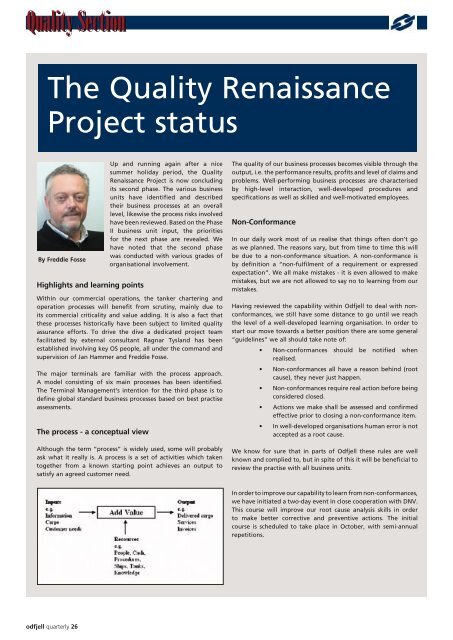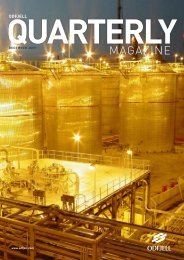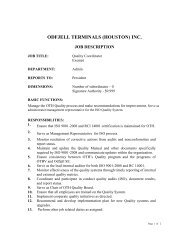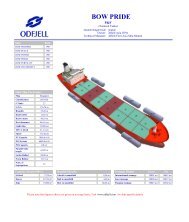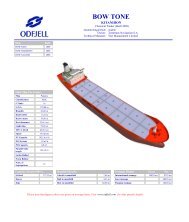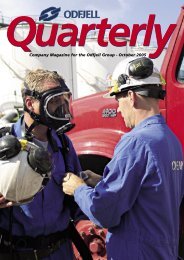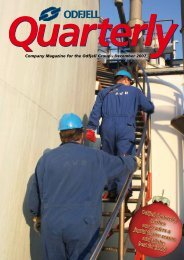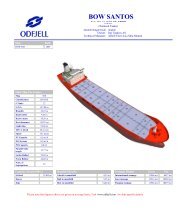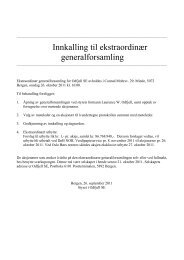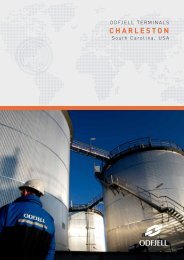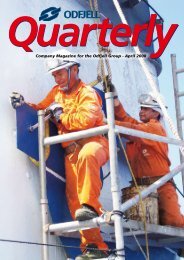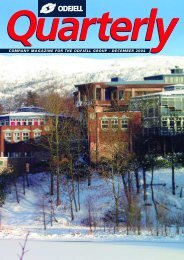Quarterly October 2004 - Odfjell
Quarterly October 2004 - Odfjell
Quarterly October 2004 - Odfjell
- No tags were found...
Create successful ePaper yourself
Turn your PDF publications into a flip-book with our unique Google optimized e-Paper software.
Quality SectionThe Quality RenaissanceProject statusBy Freddie FosseHighlights and learning pointsUp and running again after a nicesummer holiday period, the QualityRenaissance Project is now concludingits second phase. The various businessunits have identified and describedtheir business processes at an overalllevel, likewise the process risks involvedhave been reviewed. Based on the PhaseII business unit input, the prioritiesfor the next phase are revealed. Wehave noted that the second phasewas conducted with various grades oforganisational involvement.Within our commercial operations, the tanker chartering andoperation processes will benefit from scrutiny, mainly due toits commercial criticality and value adding. It is also a fact thatthese processes historically have been subject to limited qualityassurance efforts. To drive the dive a dedicated project teamfacilitated by external consultant Ragnar Tysland has beenestablished involving key OS people, all under the command andsupervision of Jan Hammer and Freddie Fosse.The major terminals are familiar with the process approach.A model consisting of six main processes has been identified.The Terminal Management’s intention for the third phase is todefine global standard business processes based on best practiseassessments.The process - a conceptual viewAlthough the term “process” is widely used, some will probablyask what it really is. A process is a set of activities which takentogether from a known starting point achieves an output tosatisfy an agreed customer need.The quality of our business processes becomes visible through theoutput, i.e. the performance results, profits and level of claims andproblems. Well-performing business processes are characterisedby high-level interaction, well-developed procedures andspecifications as well as skilled and well-motivated employees.Non-ConformanceIn our daily work most of us realise that things often don’t goas we planned. The reasons vary, but from time to time this willbe due to a non-conformance situation. A non-conformance isby definition a “non-fulfilment of a requirement or expressedexpectation”. We all make mistakes - it is even allowed to makemistakes, but we are not allowed to say no to learning from ourmistakes.Having reviewed the capability within <strong>Odfjell</strong> to deal with nonconformances,we still have some distance to go until we reachthe level of a well-developed learning organisation. In order tostart our move towards a better position there are some general“guidelines” we all should take note of:• Non-conformances should be notified whenrealised.• Non-conformances all have a reason behind (rootcause), they never just happen.• Non-conformances require real action before beingconsidered closed.• Actions we make shall be assessed and confirmedeffective prior to closing a non-conformance item.• In well-developed organisations human error is notaccepted as a root cause.We know for sure that in parts of <strong>Odfjell</strong> these rules are wellknown and complied to, but in spite of this it will be beneficial toreview the practise with all business units.In order to improve our capability to learn from non-conformances,we have initiated a two-day event in close cooperation with DNV.This course will improve our root cause analysis skills in orderto make better corrective and preventive actions. The initialcourse is scheduled to take place in <strong>October</strong>, with semi-annualrepetitions.odfjell quarterly 26


